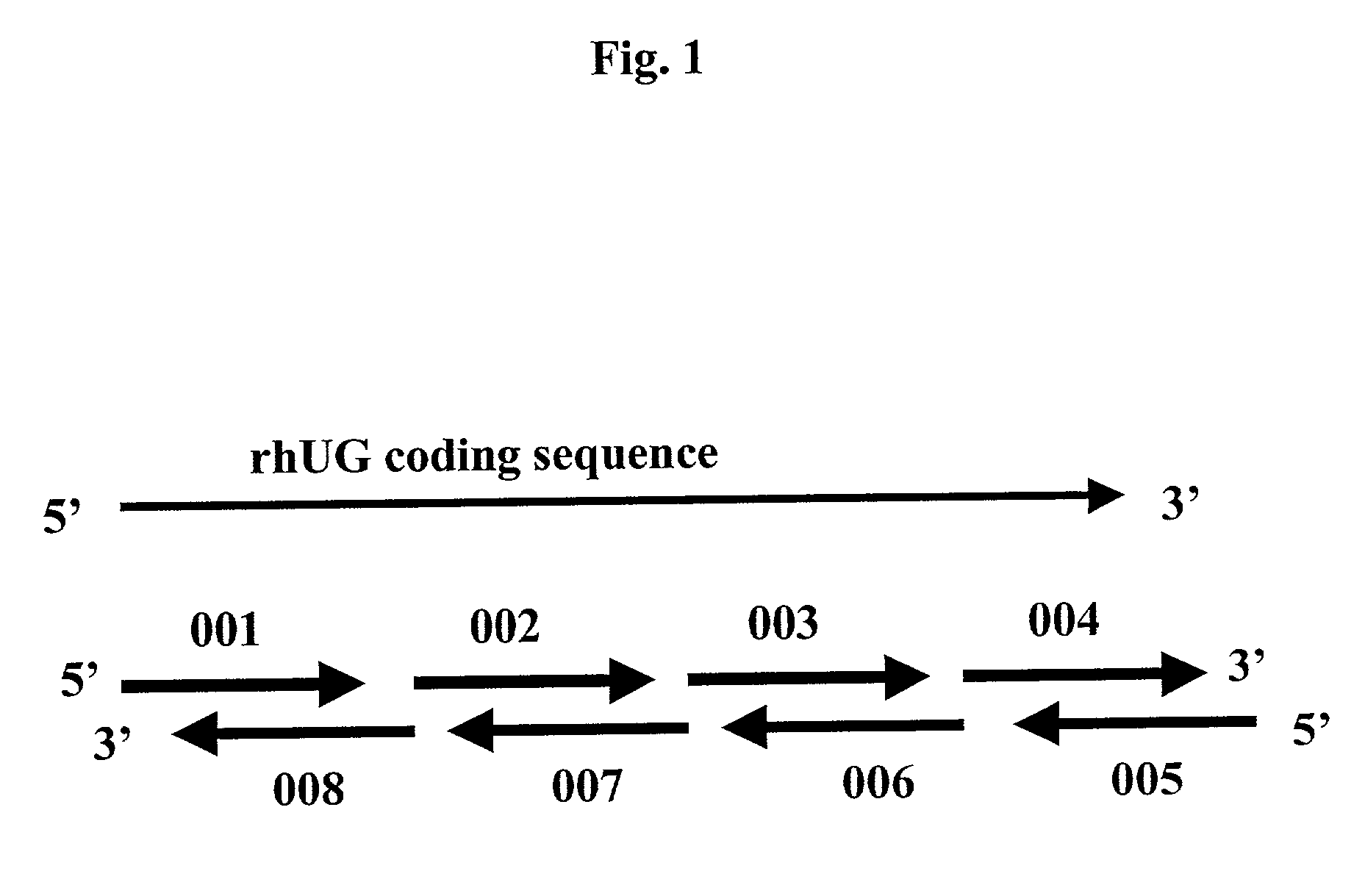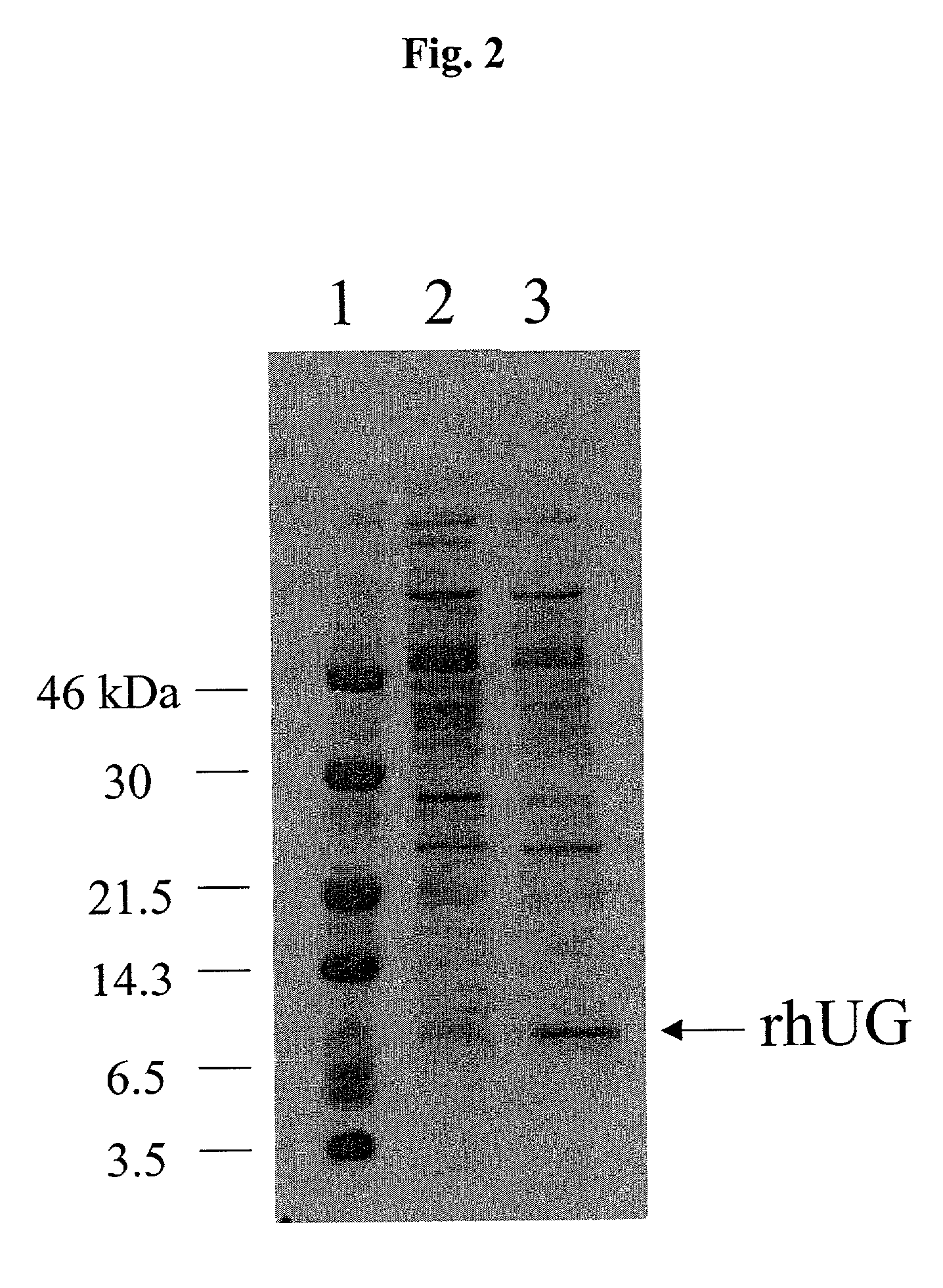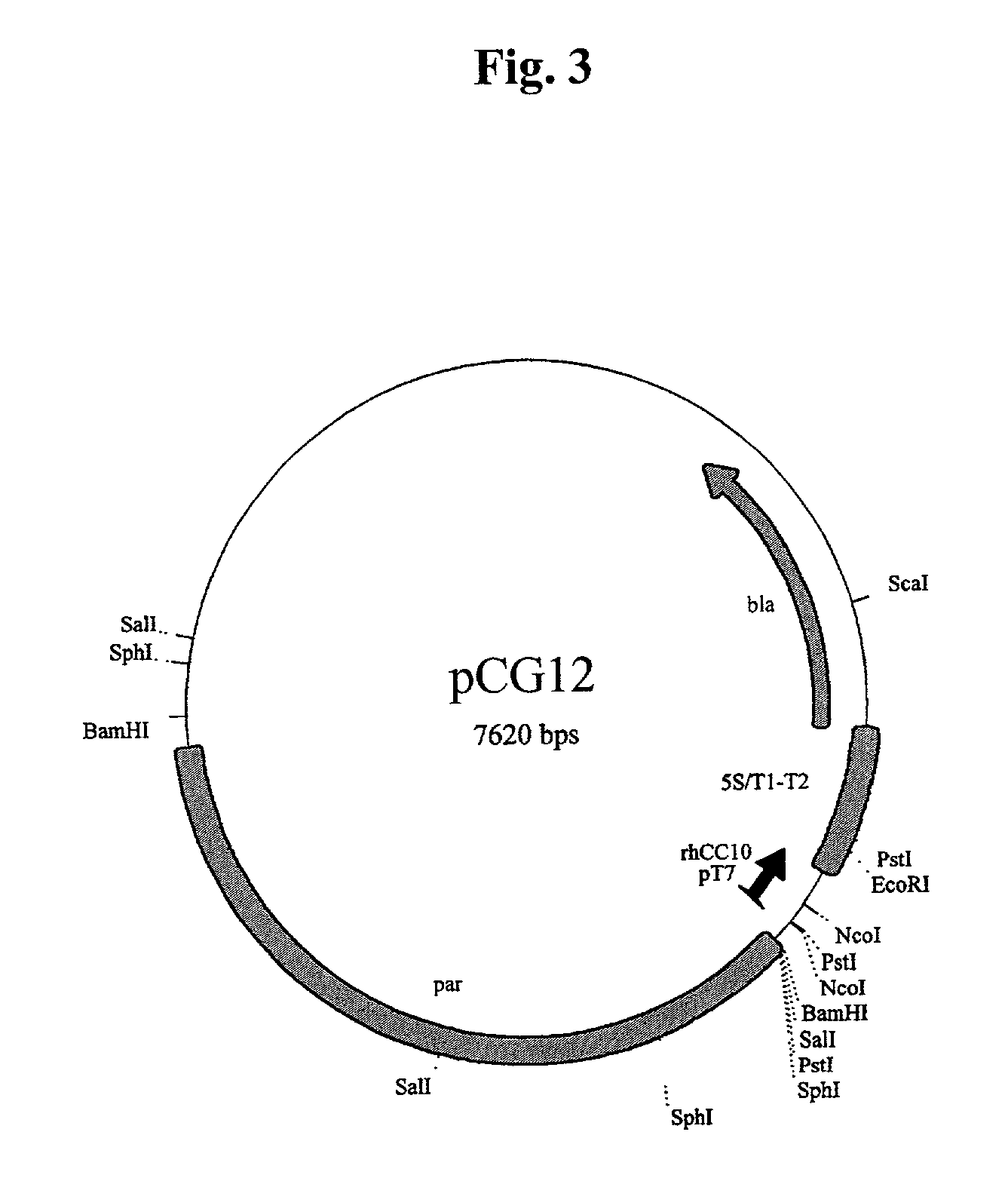Methods for the production of purified recombinant human uteroglobin for the treatment of inflammatory and fibrotic conditions
a technology of uteroglobin and uterine fibrosis, which is applied in the direction of depsipeptides, peptide/protein ingredients, aerosol delivery, etc., can solve the problems of end stage renal failure, organ nonfunctionality, and major problem of chronic inflammatory and fibrotic disease in a significant percentage of this patient population, and achieve the effect of determining the level of cleavag
- Summary
- Abstract
- Description
- Claims
- Application Information
AI Technical Summary
Benefits of technology
Problems solved by technology
Method used
Image
Examples
example ii
Testing of Plasmid Vector Constructs in Strains of E-Coli
[0156] Several different plasmid vector constructs containing the MGS-synthetic gene and different combinations of replicons, promoters, transcriptional repressors, and antibiotic selections were then tested in several different strains of E. coli. Several of these host / vector systems are shown in Table 2. A version of the synthetic gene with MAA-at the N-terminus was also made and tested in some of these host-vector systems. Subclonings of the synthetic genes into pRK248cIts were done using a BamH1 fragment containing the rhUG synthetic gene from the pKK223-3 clones. Subclonings into pGEL101 and pGELAC were done using Nco1-BamH1 fragments containing the gene in pKK223-3.
2TABLE 2 Combinations Generated for Optimal rhUG Expression in E. coli Strain rhUG-ID N-terminus Vector 5'RE-3'RE Selection.sup.1 Induction Promoter Host Strain Source CG1 M- pKK223-3 Nco1-BamH1 Ampicillin.sup.2 IPTG.sup.5 Lac DH5.alpha.F'I.sup.q Life Technolo...
example iii
Preparation of a Research Seed Cell Bank
[0165] A research seed culture was inoculated from a single colony of BL21 / DE3 containing pCG12 grown on LB agar containing 50 micrograms / ml of ampicillin. A research seed bank was generated from the 50 ml research seed culture grown at 32.degree. C. in LB medium containing no antibiotic selection. The culture was grown to early stationary phase and glycerol was added to a final concentration of 20%. The culture was then frozen in 1 ml aliquots and stored at -75.degree. C. Aliquots of this research seed were then used for fermentation development, as well as to generate master and working cell banks.
[0166] The pCG12 vector is genetically stable, such that the DNA sequence remains unchanged through the manipulations required to produce rhUG drug substance. The entire pCG12 plasmid was sequenced after cloning and prior to the creation of the research seed bank (SEQ. ID NO. 9). Although pCG12 is stable in the absence of antibiotic, it does confer...
example iv
Preparation of Master and Production Seed Cell Banks
[0167] A master cell bank was prepared from research seed of strain CG12. A flowchart outlining the both the Master and Production cell banking processes is presented in FIG. 4. A list of the chemicals and materials used in the manufacture of the Master and Production seeds is provided in Table 3. All chemicals and materials were USP grade, in compliance with cGMP.
3TABLE 3 Raw materials and Chemicals Used in Production of Master and Production Seed Cell Banks. Material / Chemical Manufacturer Grade Glycerol J. T. Baker USP / FCC Yeast Extract Difco N / A Tryptone Difco N / A Sodium Chloride J. T. Baker USP / FCC Water for Injection WRAIR USP Research Cell bank Claragen cGLP (for Master Seed Production) Master Cell bank WRAIR cGMP (for Production Seed Production)
[0168] An aliquot of the CG12 research seed was added to a shake flask containing Luria Broth ("LB") and maintained at 32.degree. C. with shaking, monitoring the growth by optical den...
PUM
| Property | Measurement | Unit |
|---|---|---|
| Temperature | aaaaa | aaaaa |
| Temperature | aaaaa | aaaaa |
| Temperature | aaaaa | aaaaa |
Abstract
Description
Claims
Application Information
 Login to View More
Login to View More - R&D
- Intellectual Property
- Life Sciences
- Materials
- Tech Scout
- Unparalleled Data Quality
- Higher Quality Content
- 60% Fewer Hallucinations
Browse by: Latest US Patents, China's latest patents, Technical Efficacy Thesaurus, Application Domain, Technology Topic, Popular Technical Reports.
© 2025 PatSnap. All rights reserved.Legal|Privacy policy|Modern Slavery Act Transparency Statement|Sitemap|About US| Contact US: help@patsnap.com



